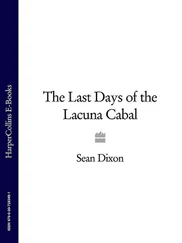The production was magnificent. The action takes place in Russia in ancient times. All the costumes were made with the greatest luxury from Turkish fabrics, exactly as they wore then. There was an embassy of Kalmyks, singing and dancing in the Tatar manner, and Kamchadals, dressed in national costume, who likewise perform the dances of central Asia. The ballet with which the opera ends was performed by Picquet, Madame Rosa, and other good dancers. Represented in it are all the different peoples who populate the empire, each in its own national dress. I never saw a more magnificent or more varied spectacle: there were more than five hundred people on stage! However, there were fewer than fifty of us in the audience: so uncompromising is the empress with regard to access to her Hermitage. 43
Nervous about the quality of her theatrical compositions, Catherine recruited her secretary, Alexander Khrapovitsky, to work through the night to correct her grammar and spelling. In 1789, she asked Lev Naryshkin to shorten her comedy The Misunderstanding , complaining that it had been the cause of ‘more labour than laughter’. 44By then, she had turned her hand to innovative historical dramas inspired by Shakespeare. Ryurik , written in August 1786 but never performed, was an allegory intended to glorify the benefits of a benevolent foreign ruler. Its sequel was Catherine’s libretto for The Beginning of Oleg’s Reign , an operatic pageant celebrating the union of Greek and Russian cultures, published in 1787 and eventually premiered in a lavish production in the autumn of 1790 to commemorate her empire’s victories in the Russo-Turkish War of 1787–91. 45
* * *
Contemporary imperial developments were indeed as fantastic as any opera plot. In October 1786 Potëmkin requested more money to fund his insatiable ambitions in the South. Not content with plans for a university at Yekaterinoslav (now Dnipropetrovsk in Ukraine), he envisaged a cathedral grand enough to rival St Peter’s in Rome and ‘dedicated to the Transfiguration of the Lord as a sign that your labours have transfigured this land from a barren steppe into an abundant garden, and the abode of beasts into a favourable refuge for immigrants from all countries’. 46Catherine had already trumpeted his claims to Dr Zimmerman:
‘In the Tauride the main thing must probably be agriculture, and also silkworms, and after that plantations of mulberry-trees. We could manufacture cloth there, though the wool is not of the best quality, and it would be good to make cheese too (NB hardly any cheese is made in the whole of Russia). A further key objective in the Tauride might be gardens, and especially botanical gardens.’ 47
It remained only to see this paradise for herself in the company of her handsome new favourite. The twenty-six-year-old guards officer Alexander Dmitryev-Mamonov, nicknamed ‘Redcoat’ by the empress, had been installed by Potëmkin in July. Describing this latest paragon to Grimm in December, she praised his heart, his honesty and his intelligence: ‘in a word, he is as sound in his inner self as his dextrous, strong and brilliant exterior’. 48Though the same optimistic tone could always be heard at the start of each new relationship, this time there was a grain of truth in the hyperbole. Mamonov shared many of Catherine’s interests and delighted a select audience at the Hermitage Theatre in 1788 with his comedy L’Insouciant , written in mock tribute to Lev Naryshkin. 49
As the empress cleared her desk at the Winter Palace on New Year’s Day 1787, a range of scandals was brewing among her closest circle. Bezborodko had fallen for an attractive dancer and set her up in a house next to his own, depositing 10,000 roubles in her name at the foundling home. 50More menacingly, Prince Frederick of Württemberg had returned to Germany, having abandoned his long-suffering wife, Zelmira (Princess Auguste of Brunswick), the sister-in-law of Maria Fëdorovna. ‘The Prince of Württemberg’s thrashings have finally forced his wife to withdraw to my apartments because she was actually in danger for her life,’ the empress reported to Potëmkin. As her secretary noted with typical understatement, ‘various consequences transpired which took up a lot of time’. Despite the empress’s support for Zelmira, the dispute remained unresolved at the princess’s death in September 1788. 51For the moment, all Catherine could do was to try to put such troubles behind her as she left for Tsarskoye Selo on 2 January to prepare for the greatest journey of her life.
It had been long enough in the planning. Four years earlier, Zavadovsky had told Field Marshal Rumyantsev of the empress’s secret intention to travel via Smolensk and Kiev for a meeting with Joseph II at Kherson. 52Orders went out in September 1784 that all the dams on the Dnieper and its tributaries be cleared to allow ‘navigation from their very sources’ in the following spring. Court officials were urged to do everything possible to economise and limit the number of horses required. 53Later that autumn, however, the renewed threat of plague in the South threw the whole project into doubt—in the aftermath of Lanskoy’s death, the Vorontsovs were not the only ones opposed to the idea of exposing Catherine to unnecessary risk—and by the time she returned from Moscow in summer 1785 it had already been decided to postpone her great venture until January 1787. 54
When her cavalcade left Tsarskoye Selo on 7 January Catherine and her suite sheltered under bearskins inside their carriages while their servants’ faces were exposed to driving sleet and wind. She had to stop for three days at Smolensk while their eyes recovered and Dr Rogerson administered St James’s powders to the feverish ‘Redcoat’. Archdeacon Coxe, who passed through Smolensk in the summer of 1778, thought it ‘by far the most singular town’ he had ever seen. ‘The walls stretching over the uneven sides of the hills till they reach the banks of the Dnieper, their ancient style of architecture, their grotesque towers, the spires of churches shooting above the trees, which are so numerous as almost to conceal the buildings from view, the appearance of meadows and the arable ground, all these objects blended together exhibit a scene of the most singular and contrasted kind.’ 55The empress liked the place better. Though far from enchanted by the populace who thronged to catch a glimpse of her—‘they’d gather in fistfuls to see a bear, too’ 56—she was so impressed by the local nobility that she staged an impromptu ball and congratulated the Governor General and his staff on ‘their zeal for the common good and the precision with which each fulfilled his duties’. 57
At Smolensk, Catherine worshipped in the Dormition Cathedral, a huge, five-domed edifice completed in 1772 almost a century after the foundation stone had been laid. 58At Chernigov, she admired an altogether more ancient foundation, the tenth-century cathedral founded by Mstislav Vladimirovich, while privately singling out Bishop Feofil for his ‘stupidity’. Archimandrite Dorofey made a better impression at Kozelsk, receiving 500 roubles for a pleasing sermon. 59But it was left to one of her favourite preachers, Bishop Georgy of Mogilëv, to greet the empress at Mstislavl with an oration studded with the sorts of leaden bon mot she most admired: ‘Let us leave it to the astronomers to prove that the earth revolves around the sun: our Sun travels around us, and travels in order that we may rest in prosperity.’ 60
The ‘palace’ in which Catherine slept at Potëmkin’s estate at Krichëv on 19 January was in reality a large wooden house similar to those built at every staging post on the journey. Here the sentries fell under the command of the twenty-one-year-old Lev Nikolayevich Engelhardt, a relative of the prince who spent most of the night scurrying round in search of buckets of water to guard against fire. 61Staying nearby was Jeremy Bentham, on a visit to his brother, Samuel, who had been in Potëmkin’s service since 1784. Bentham, who preferred to be ‘inquired after’ rather than seen, learned that the empress had processed through fir-strewn streets ‘illuminated with tar barrels, alternating with rows of lamps, formed by earthen-pots filled with tallow and a candle wick in the middle’. Though it was hard not to be impressed by her cavalcade, Bentham derived a jaundiced view of the proceedings from Alleyne Fitzherbert, who was ‘sick of the excursion’ having ‘got something the matter with his liver’:
Читать дальше












